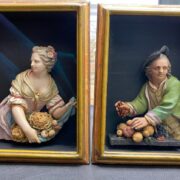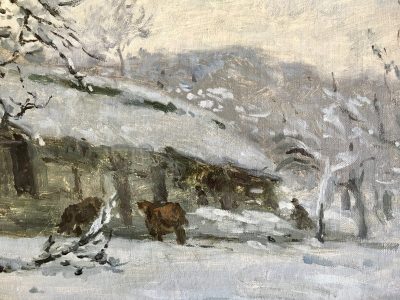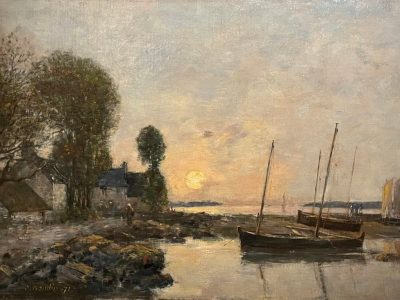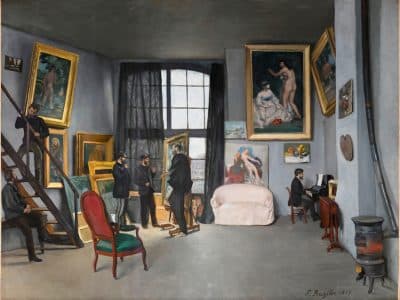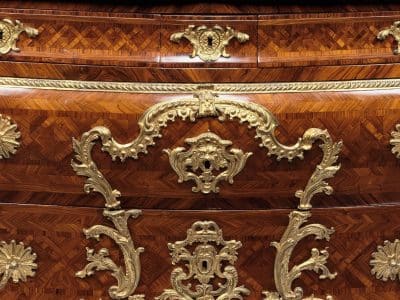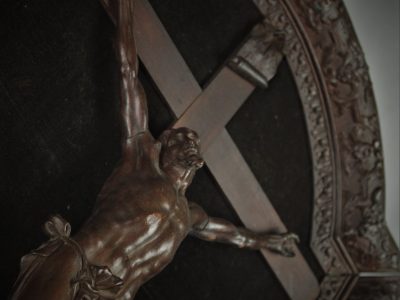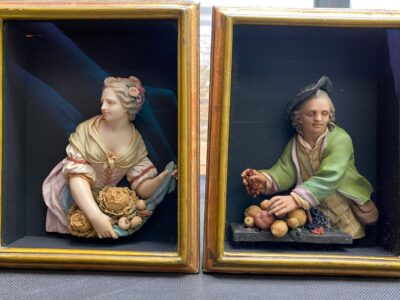There are already plenty of reasons to visit Windsor Castle, but until April 29th, 2024, you have one more: marvel at the crisply detailed “Susanna and the Elders” by Artemisia Gentileschi—along with two other artworks of the Gentileschi father and daughter. This painting sees the light again thanks to the dedicated work of the Royal Collection Trust’s curators and conservators.
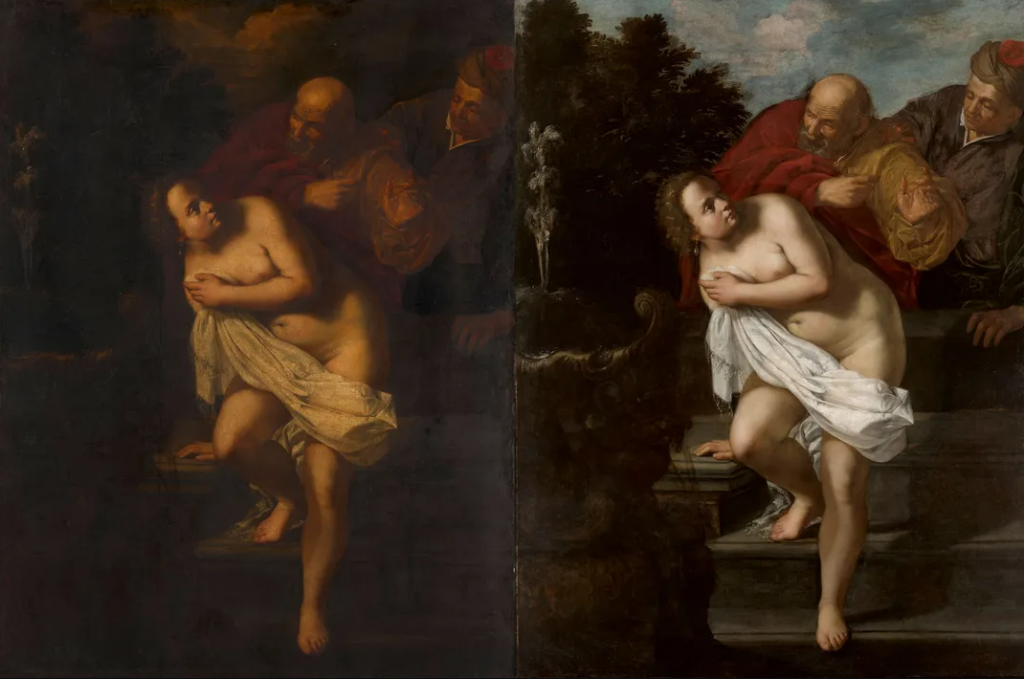
A striking difference thanks to 5 years of restoration on Susanna and the Elders. Royal Collection Trust © His Majesty King Charles III 2023
The painting sent shockwaves through the art world in September 2023, when it was re-attributed to Artemisia Gentileschi (1593 – c. 1656), the most acclaimed female painter of the 17th century and one of the most significant artists of the Italian Baroque. For over 200 years, all the eyes that had turned to this painting saw it as something it was not. Sometime in the 18th century, the painting lost its attribution, first misattributed to Benedetto Gennari, then to ‘French School’.
We owe the joy of seeing this painting again as Artemisia Gentileschi’s to research surrounding the collection of King Charles I after his death. The painting was hidden in a store room at Hampton Court Palace when the light was shed on its true author. It took five years of conservation work to remove the dirt, overpainting, and the extensions that were added—maybe as early as 1710. With all this extensive work, whether on the painting or the documentation, the elements finally converged: the curators are now fully confident of the attribution to Artemisia.
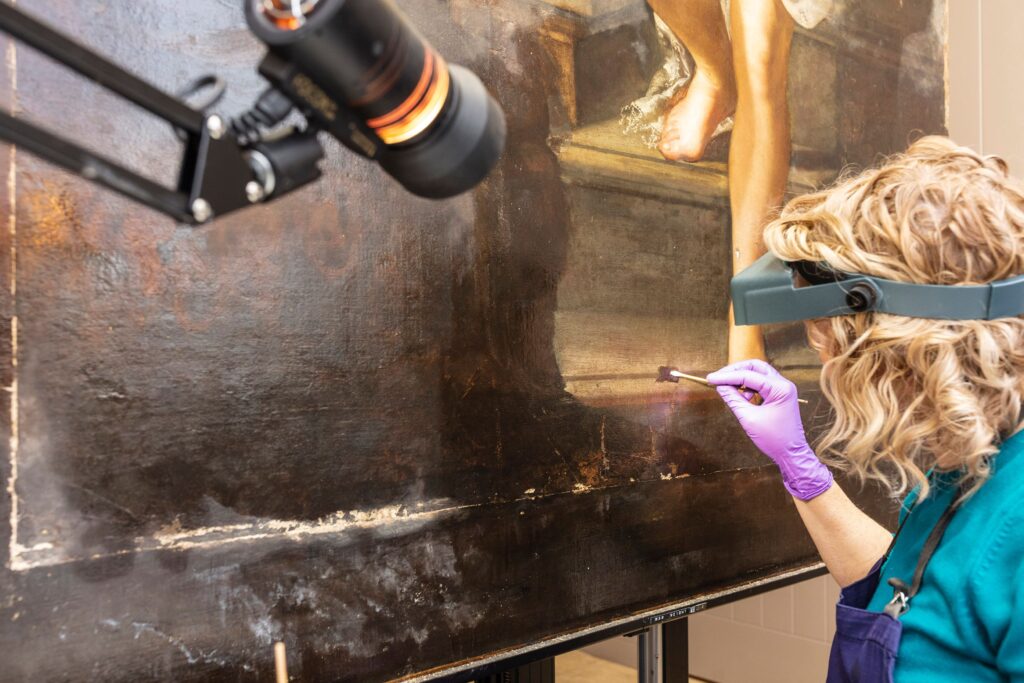
Adelaide Izat, Paintings Conservator, restoring “Susanna and the Elders”. Royal Collection Trust © His Majesty King Charles III 2023
When it came into the studio, ‘Susanna’ was the most heavily overpainted canvas I had ever seen, its surface almost completely obscured. It has been incredible to be involved in returning the painting to its rightful place in the Royal Collection, allowing viewers to appreciate Artemisia’s artistry again for the first time in centuries. — Adelaide Izat, Paintings Conservator
Orazio and Artemisia Gentileschi in England
Thanks to a thorough investigation of the royal inventories, we think “Susanna” was most likely painted for Henrietta Maria, wife of Charles I and therefore Queen Consort of England, Scotland, and Ireland from 1625 to 1649. The records show that it was placed over the fireplace in the Queen’s Withdrawing Chamber at Whitehall in 1639.
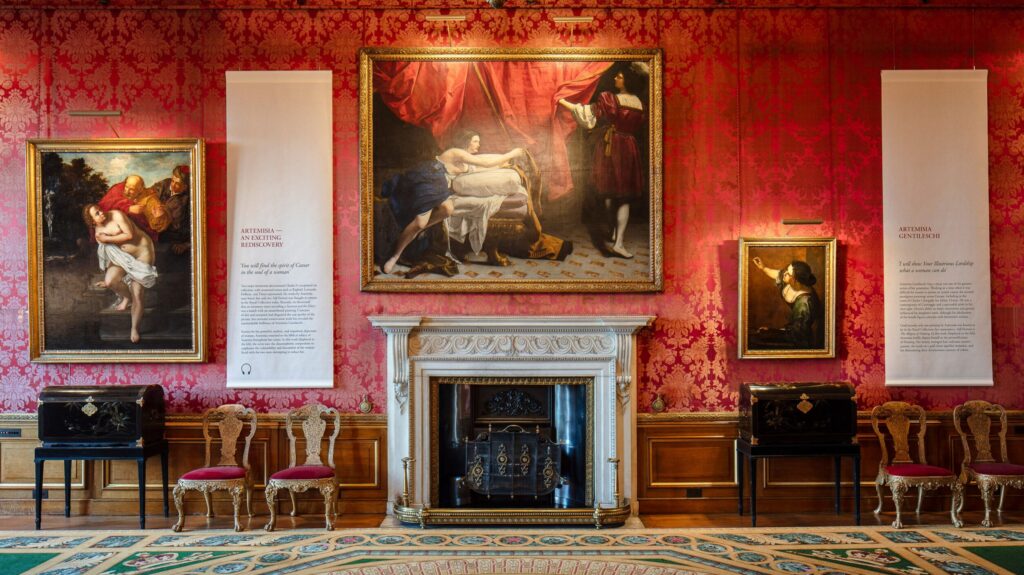
Three Gentileschi paintings at Windsor Castle. Royal Collection Trust © His Majesty King Charles III
Charles I accumulated seven paintings of Artemisia Gentileschi over his reign. After his execution in 1649, many of his artworks were sold across Europe. Only one of them was known to have remained in the royal collections, “Self Portrait as the Allegory of Painting” (right painting on display at Windsor Castle). Artemisia Gentileschi, born in Roma, was working in Naples when she was invited by Charles I in 1638 to join her father Orazio Gentileschi who had been working as a court painter there since 1626. Orazio painted “Joseph and Potiphar’s Wife” during his stay in London (center painting on display at Windsor Castle).
It is quite likely that Artemisia helped her father to complete “An Allegory of Peace and the Arts” as the ceiling decor was delivered in 1639. Unfortunately, Orazio passed away in England this same year. He had the honor of being buried in the Queen’s Chapel at Somerset House. It is not clear when Artemisia returned to Italy. She was most likely gone when the English Civil War started in 1642.
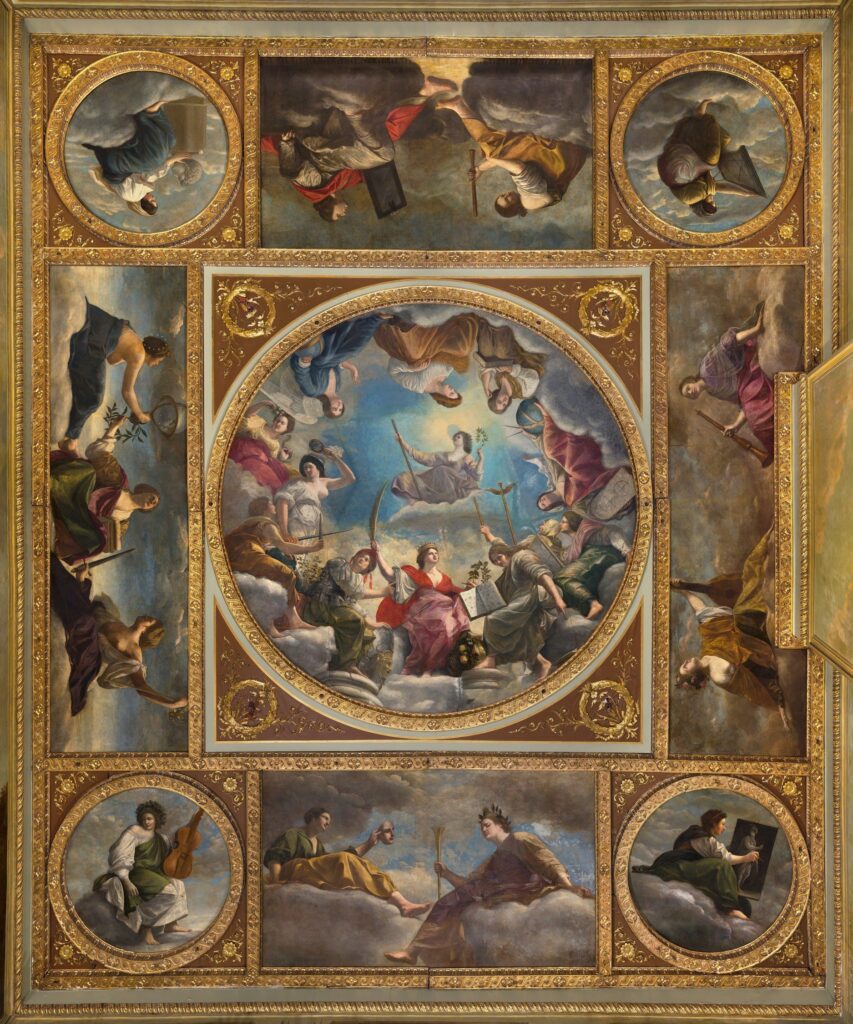
An Allegory of Peace and the Arts by Orazio Gentileschi and Artemisia Gentileschi. Originally painted for Queen Henrietta Maria in the Great Hall of the Queen’s House, Greenwich. It was later offered by Queen Anne to Sarah Churchill, first Duchess of Marlborough, and re-adjusted to fit the Malborough House on Pall Mall. Royal Collection Trust © His Majesty King Charles III
“Susanna and the Elders”: Different Versions Throughout Artemisia’s Life
“Susanna and the Elders” is a parable from the Old Testament narrated in the Book of Daniel. It illustrates the victory of justice over lies and the misuse of power. And it glorifies chastity. Two old judges are leering over Susanna while she is bathing in her private garden. They mean to rape her but demand her silence or they will publicly accuse her of adultery. She shouts for help, but brought to court, she is condemned to death. Daniel, an advisor of the Babylonian King, saw through the lies of the notables thanks to a cross-examination of their testimonials.
This story grew in popularity as a subject for paintings in the 16th and 17th century, certainly for its religious and moral values, but also because it offered an acceptable pretense for a titillating visual.
Artemisia Gentileschi repeatedly developed this topic. “Susanna and the Elders” holds a special place in her career as it is both her earliest and last known dated work in 1610 and 1652. Of course, the rape of Artemisia by Agostino Tassi in 1611 (he was sued and recognized guilty) may have an influence on how she treated this subject in her lifespan. Yet, we cannot help but notice that her first version was made even before her rape. Her talent for showing Susanna’s anguish and reprobation (not just her body) might just be related to her personal sensitivity and strong vitality.
Below, you can find her six Susanna paintings (including the one in the Royal Collection Trust) in a chronological order. A seventh version at the Notthingham Castle Museum would be a copy of the 1622 painting at Burghley House. Located in the UK, Germany, Czech Republic, and Italy, what a nice trip this would be to see them in person when possible!

1610 – Schönborn Collection in Pommersfelden

1622 – At Burghley House near Stamford (UK)
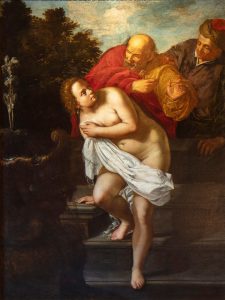
1639 – Royal Collection Trust

1649 – Moravian Gallery in Brno
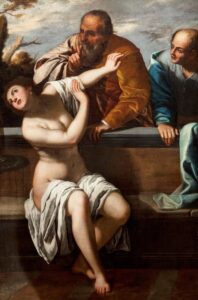
C. 1650 – Museo Biblioteca Archivio in Bassano del Grappa
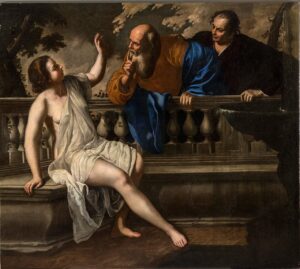
1652 – Pinacoteca Nazionale in Bologna
Create Your Own 17th-Century Baroque Interior
With particular relevance to this article:

Double-Sided Oil on Panel: Susanna and the Elders and a Portrait. © Period Portraits

Oil-on-Panel Portrait of Charles I by Henry Stone (1616-1653). © Period Portraits
Susanna and the Elders | 17th-Century Fine Arts | 17th-Century Furniture & Decorative Arts


